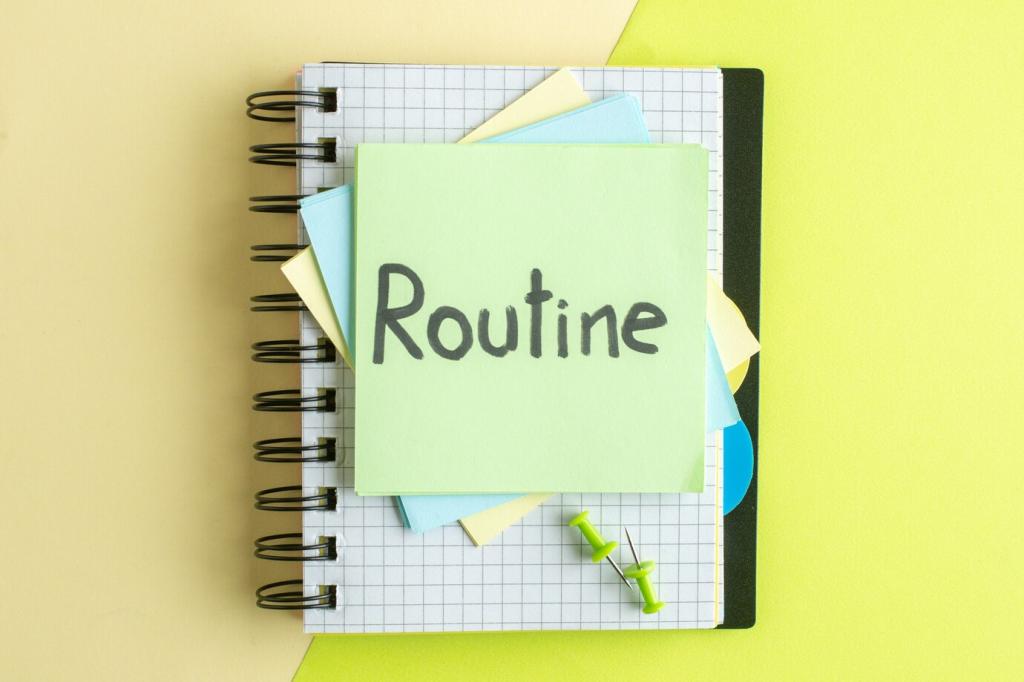Habit Stacking: Skills for a Productive Life
Chosen theme: Habit Stacking: Skills for a Productive Life. Build lasting routines by linking small, meaningful actions to habits you already do, so momentum carries you forward with less effort and more joy.
The Science Behind Habit Stacking
01
Our brains love patterns. By attaching a new behavior to a reliable anchor—like brushing teeth—you exploit cue-based memory, reducing decision fatigue and building automaticity without constant motivation or willpower.
02
Small actions slip under the radar of resistance. Over weeks, those tiny behaviors multiply into noticeable results, much like interest compounding quietly until one day the progress looks suddenly big.
03
Pair each stacked action with a quick, positive emotion—like a smile, a deep breath, or a whispered “nice work.” That micro-reward cements the loop and encourages you to keep showing up tomorrow.
Choose a Reliable Anchor
Pick a daily habit that never skips: pouring coffee, locking your door, or sitting at your desk. The more consistent the anchor, the smoother your new routine will click into place.
Optimize Friction and Flow
Make the next step obvious and easy. Lay out your journal by the kettle, place sneakers by the bed, or pin the checklist to your monitor so the path forward requires zero hunting.
Name Your Stack and Track It
Give your sequence a memorable name like “Breathe-Write-Plan.” Then track streaks visibly. A named routine feels tangible, and a streak makes consistency emotionally satisfying and hard to abandon.
Wake, Water, and First Light
After turning off the alarm, drink a full glass of water and look toward natural light. This tiny trio nudges circadian rhythms, lifts alertness, and signals your body that the day has purpose.
Two-Minute Movement Primer
Attach a micro workout—ten squats, a short stretch, or sun salutations. Brief movement increases blood flow, brightens mood, and tells your brain, “We take action here,” shaping a productive identity.
Focus Before Feeds
Before opening any apps, write one sentence defining your top outcome for the day. This crisp intention protects attention, guiding choices when notifications and inboxes start tugging at your time.

Workday Power Stack
Start-of-Day Triage
Open your task list, then spend three minutes labeling items: Must, Nice, Not Today. This quick classification clears mental clutter and gives your energy a precise runway for takeoff.
Deep Work Launch Sequence
Silence notifications, set a 50-minute timer, and place your phone in another room. Open only the one document that matters. A single constraint removes friction and turns intention into execution.
Strategic Micro-Break
When the timer ends, stand up, sip water, and stare at a distant point for thirty seconds. This reset protects your eyes, posture, and focus, making the next session easier to begin.
Evening Wind-Down Stack
After dinner, switch screens to grayscale and set a social media limit. This gentle boundary helps your brain transition from stimulation to calm, supporting deeper rest and better morning energy.
Evening Wind-Down Stack
Write three brief lines: what went well, what you learned, and what to release. This simple reflection lowers stress while training your attention to notice progress, not just problems.
Evening Wind-Down Stack
Lay out clothes, prep breakfast, and place your top task on a sticky note. Removing micro-decisions tonight makes tomorrow feel lighter, inviting momentum the moment you wake.
Troubleshooting and Staying Consistent
If you miss a step, shrink it. Forty push-ups become four, a page becomes a sentence. Keeping the chain alive matters more than any single perfect performance.
Troubleshooting and Staying Consistent
Store tools where you use them, pre-fill water bottles, and template your journal. When the next step is obvious and prepared, doing it beats procrastination by sheer convenience.

